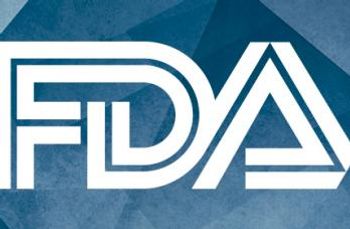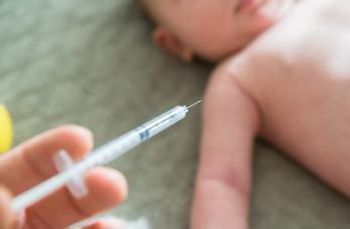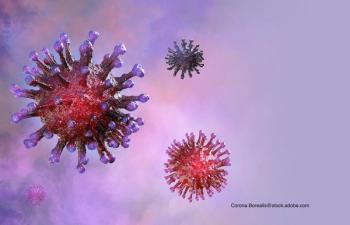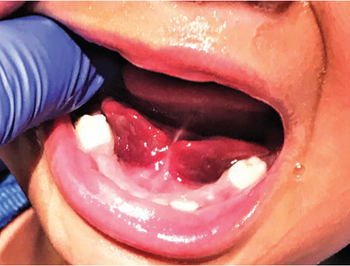
The US Food and Drug Administration (FDA) has approved the use of Jublia (efinaconazole) topical solution, 10%, to include children aged 6 years and older with toenail fungal infections.

The US Food and Drug Administration (FDA) has approved the use of Jublia (efinaconazole) topical solution, 10%, to include children aged 6 years and older with toenail fungal infections.

The battle to keep tobacco out of the hands of children and minors is occurring on many fronts but may be lost at the point-of-sale.

The complete toll of self-isolation to flatten the curve of COVID-19 remains unknown, but a new research letter from China shows that stay-at-home measures have increased depression and anxiety symptoms among children.

A simplified assessment could determine the need for medications to treat opioid withdrawal in neonates more quickly.

A great practice website can be a way to get new patients into a practice, no matter the time of day.

Not well understood or often studied, nonverbal learning disability (NVLD) may be more prevalent than experts previously believed, according to a new study.

The US FDA has approved Sanofi’s meningococcal (groups A, C, Y, W) conjugate vaccine (MenQuadfi) to prevent invasive meningococcal disease in children aged 2 years or older.

A new study adds more evidence that COVID-19 tends to have a milder course of disease in children. Asymptomatic cases are also common in the pediatric population.

Despite clear guidelines opposing it, some children aged younger than 18 months get screen time with televisions, tablets, or cell phones. A new study indicates that these early exposures could increase the risk of autism spectrum disorder (ASD)-like symptoms later in life.

To keep health care providers safe, the Centers for Disease Control and Prevention has issued a collection of tips that guidelines for extending use, recommendations for extended use, reuse recommendations, and a look at the risks that reuse or extended use can carry.

A recent report from the University of Southern Florida in Tampa indicates that the number of children with COVID-19 could be more than previously thought.

The US Preventive Services Task Force (USPSTF) has issued draft recommendations that highlight the need for further evidence on the efficacy of hypertension screening in pediatrics.

The COVID-19 pandemic continues to rage, but many questions remain. Questions like: How are children coping with the trauma many families are currently experiencing in their family lives? Are schools and pediatric offices prepared to help children and adolescents cope with their losses?

Contemporary Pediatrics spoke with Andrew J. Schuman, Editorial Advisory Board member, clinical assistant professor of Pediatrics, Geisel School of Medicine at Dartmouth, Lebanon, New Hampshire, and practicing pediatrician, about incorporating virtual patient visits-telehealth-into one’s pediatric practice during these times of social distancing and self-quarantine.

The COVID-19 pandemic has financially stressed pediatric practices, with many seeing only 20% to 30% of their typical caseload. The president of the American Academy of Pediatrics (AAP) has called on the US Department of Health and Human Services (HHS) to provide immediate no-strings financial help.

Reading is an important part of childhood and a key to future success. A new study shows that children prefer books with a high amount of causal information.

A new study in Pediatrics examined the trends in malpractice lawsuits, including how many are the subject of a lawsuit and whether the indemnity has changed.

Everyone has a slightly different take on the issues surrounding COVID-19 according to their practice, history, and a dozen other factors. These issues need to be addressed as a country.

Prekindergarten (pre-K) is a key way to prepare children for school and the benefits of a high-quality program can have long-term benefits.

Telemedicine can help provide care to many patients in need, but it won’t always be smooth sailing. There are many potential problems that can arise. Here are 5 common ones.

A 17-month-old African American girl, with no significant past medical history, is brought to the Pediatric Emergency Department with acute onset of swelling in the floor of her mouth. What's the diagnosis?

The US Food and Drug Administration (FDA) has approved selumetinib (Koselugo; AstraZeneca) for treatment of neurofibromatosis type 1 (NF1) in patients aged 2 years and older.

A new study connects an asthma diagnosis to type 1 diabetes (T1D) development later in life but also shows that the opposite may not be true.

The National Institutes of Health has updated drug labels for doxycycline, clindamycin, and caffeine citrate. The label changes address recommended usage and dosage in pediatric populations.

Arm pain is a common complaint in young athletes but playing though shoulder pain can have serious consequences. Here is guidance for diagnosing shoulder pain and helping these players get their game on.

Contemporary Pediatrics presents an on-demand webinar with pediatric experts that addresses the multitude of concerns arising from the COVID-19 pandemic.

Children who struggle with rare food allergies may have multiple food restrictions, with little understanding as to what really helps.

The flu season appears to be tapering off, according to a new report from the Centers for Disease Control and Prevention. The season has been a particularly harsh one for pediatric patients.

Life-threatening allergies are difficult to live with, in more ways than one.

Vaping has been identified as a gateway for teenagers to smoke combustible cigarettes. A new study looks at the characteristics that might create that gateway.